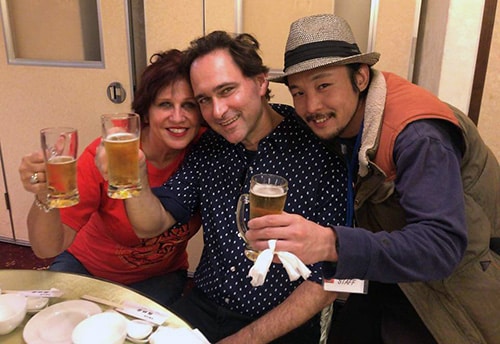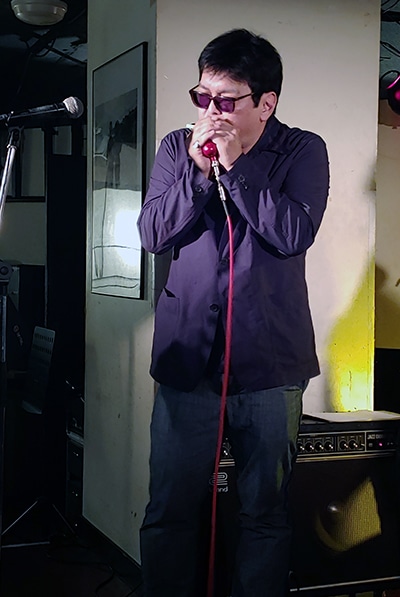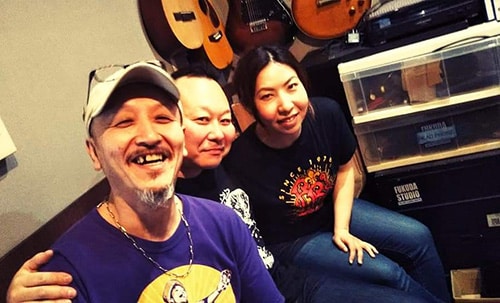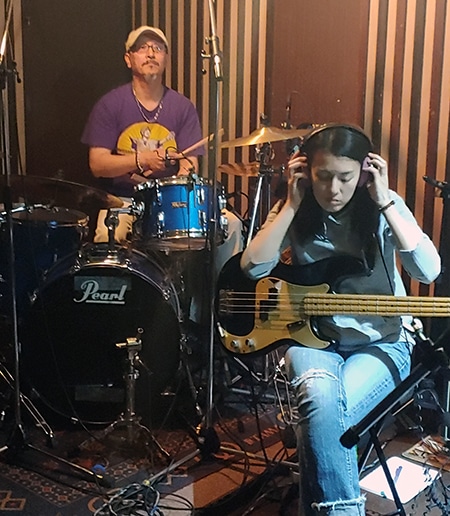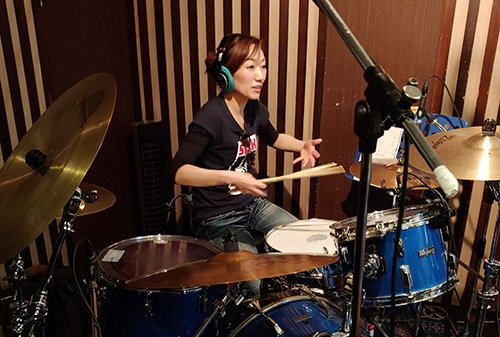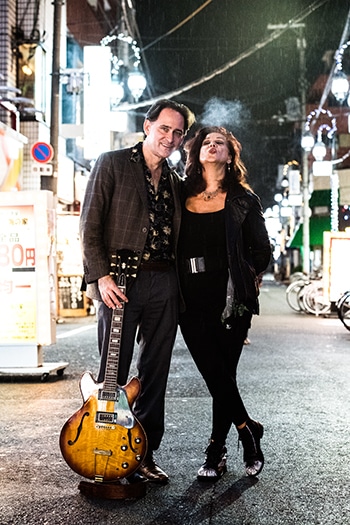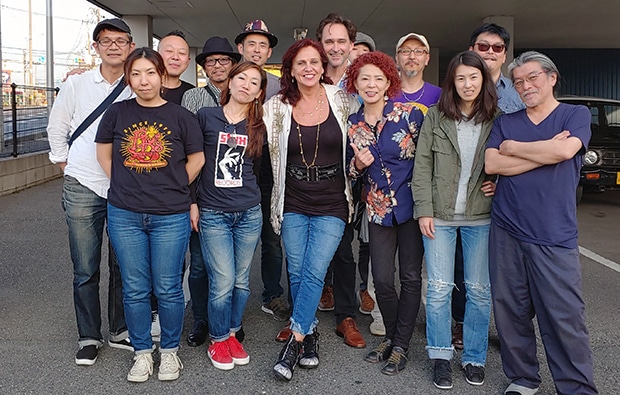
Like a great live show, Johnny Burgin’s album “No Border Blues: Japan” concludes with a fun, up-tempo and definitive song: “Sweet Home Osaka,” a salute to the iconic “Sweet Home Chicago.”
During his fourth Japanese tour in May 2019, Burgin and his partner Stephanie Tice gathered a group of the country’s top blues players to make “No Border Blues,” released Friday, June 19, on Delmark Records.
Burgin, who plays on every song, was a band leader who doesn’t speak Japanese.
“They’re so good, they didn’t need my help,” Burgin told Tahoe Onstage. “It was just like a duck in the water when it came to actual playing. They have a real purist approach. The more authentic it sounds, the more they respond to it. The spirit and enthusiasm and the seriousness they gave me, I am still on a high from it.”
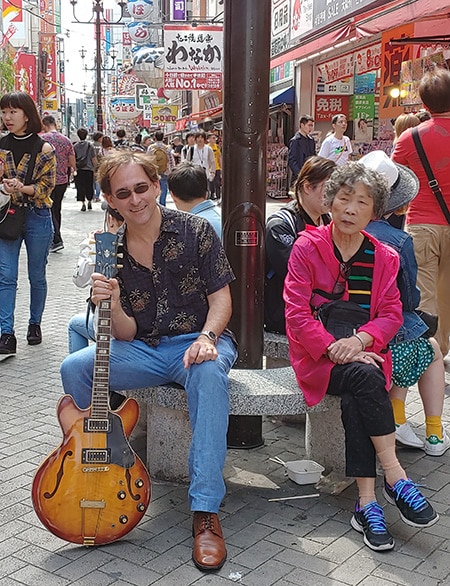
Burgin’s path to becoming a true bluesman is well traveled: He spent most of his youth living in Mississippi and moved to Chicago in 1988 and learned the trade of blues guitar. But the obvious contrast being that Burgin is white while most of his Chicago forerunners were African American.
“A radio friend took me to West Side to see Tail Dragger (Jones),” Burgin said. “It was the first time I saw a black blues band in a black club. It made a big difference to me to see it in a social context, not off a record or reading about. It was a living, breathing communal art form. It changed everything. That’s when I realized I didn’t actually know how to play guitar. I had to throw it all in the garbage can and start all over again. “
Burgin went on to tour with Chicago greats Sam Lay, Jimmy Dawkins, Pinetop Perkins and Billy Boy Arnold and appears on records with players such as Jimmy Burns, Eddie Taylor Jr. and Portland, Oregon harmonica legend Paul DeLay.
“No Borders Blues” is Burgin’s ninth solo album, although of course it features Japanese guest stars.
Burgin’s first Japanese tour was in 1996 when he was a sideman for Tail Dragger Jones. He said many of the people who attend those shows have come out to see each subsequent visit to Japan, including tour manager Koichi “Rice Cake” Sato. Tetsuya Kotez, one of three harmonica players who plays on “No Border Blues,” also saw Burgin and Tail Dragger perform in 1996.
“Blues became a boom here in ‘70s,” Kotez said. “Blues musicians playing at those small bars is basically the current situation. There are people who really love it but not many young people. (Today’s fans are) the people who started listening to blues in the ‘70s.”
Sadly ironic, it took the British Invasion to lure white America to blues music, which began acoustically in the Delta and migrated north, especially Chicago, where the sound was electrified. In the 1970s, there was a Chicago blues invasion in Japan. It began in September 1972 when B.B. King played in Osaka. The openers were the Japanese West Road Blues Band, which included guitarist Shinji Shiotsugu.
Following B.B. King to Japan were Chicago-based musicians such as Otis Rush, Jimmy Dawkins, The Aces, Eddie Taylor, Robert Lockwood Jr., Jimmy Johnson and Carey Bell. And the Kansai region that includes Kyoto, Kobe and Osaka became a blues hotbed for local players including Fusanosuki Kondo, Ryuichiro “Weeping Harp” Senoh, MitsuYoshi Azuma and Takashi “Hotoke” Nagai.
“Those people who saw those shows became the grand daddies of the Japanese blues scene that we recorded on ‘No Border Blues,’” Burgin said, describing an inclusive, multigenerational music community that is more open to including females than in the United States. “It’s not a competitive macho boys club. If you love the blues and you can play, then you can come up and play. That’s just a more welcoming atmosphere.”
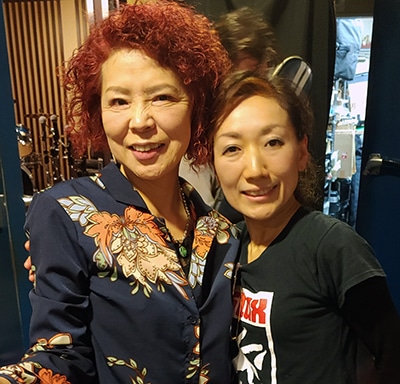
There are four women who perform on the album, including Nacomi Tanaka, who plays lead and rhythm guitar on two songs and sings on “Hurry Up Baby,” one of the album’s most guitar-rocking tracks.
“Nacomi is a bandleader who makes things happen,” Burgin said.
A resident of Kobe, Tanaka leads two bands, Nacomi and The Blues Temple and NacoMeters, which plays New Orleans flavored music.
“My father was a big fan of old country music and Dixieland and he had a collection of vinyl records,” Tanaka said. “And I would listen to American and British pop on a midnight music program on a radio station from Kyoto.”
Tanaka taught herself on an acoustic guitar her grandmother gave her when she was 12. She bought herself an electric guitar when she was in high school, and during college she was a leader of an R&B band.
“After I graduated, I couldn’t find anyone to play with,” she said. “I became an English teacher and married and had two kids. I didn’t do any music for 20 years.”
Tanka nearly died due to an illness and a surgery that “didn’t go well.” That’s when she became “reborn.”
“I realized I had to go back to the music world,” she said. “Then I met my mentor, Shinji Shiotsugu (the guitarist for Japan’s well-known group, West Road Blues Band).
Tanaka began her recording career with a solo album in 2007.
Along with Tanaka and Burgin, Yoshi Mizuno plays guitar on six of the songs on “No Border Blues.”
“He is a really smoking guitar player,” Burgin said. “He’s got that fire and aggression and I just love him.”
Takagima plays drums on five of the songs and has jammed with Burgin since 1996. He runs a jam at Chicago Rock, Osaka’s hub for traditional blues.
“Takagima has that authentic, Chess Records, Chicago groove,” Burgin said. “It just feels like deep blues. He’s world class.”
Lee Kanehira is another female on “No Border Blues.” She plays piano on six of the songs and American blues fans know her as a member of the Chicago-based Cash Box Kings. She’s appeared on that band’s last two records.
“I really love old school Chicago blues piano style like Otis Spann, Big Maceo and Pinetop Perkins,” Kanehira said. “The only one I got to see live was Pinetop at the 2008 Chicago Blues Festival.”
Kanehira regularly attends the Chicago Blues Festival, which includes “walk-in” jams sessions throughout the city. That’s were she befriended drummer Kenny “Beedy Eyes” Smith in 2011 and joined his band the Cash Box Kings following the death of Barrelhouse Chuck. The Cash Box Kings were scheduled to play the Chicago Blues Festival – canceled due to the Covid-19 situation — this summer.
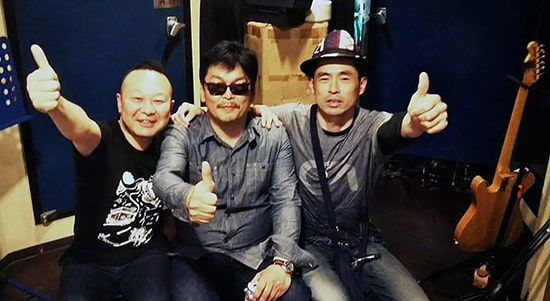
Harmonica player Kotez also loves the old Chicago sound. He became a blues fan after hearing Howlin’ Wolf.
“Chicago blues is big in Japan and Stevie Ray Vaughan style also is popular,” he said. “And, of course, on top of that, there are people who do jump blues or Lightnin’ Hopkins country blues. But old school Chicago is basically what we see people like more in Japan.”
That Chicago spirit blows through “No Borders Blues” like the “Hawk” wind off Lake Michigan. The most improvised tune is “Samurai Harp Attack, “ which features harmonica players Kotez, Iper Onishi and Kaz Nogio. The tune was inspired by the 1990 Alligator Records album “Harp Attack” with Junior Wells, James Cotton, Billy Branch and Carey Bell.
“Iper blew my mind,” Burgin said. “He has such an authentic blues sound. I love the fact that he listened to Carey Bell and he said my mission in life is to sound like Carey Bell. I was amazed at how seamlessly they blended. The whole thing was totally impromptu and we did it in one take.”
California harmonica great Mark Hummel is well aware of Kaz Nogio.
“I’m a really big fan of that guy,” Hummel said. “He plays real fluid and has a boatload of licks. His voice reminds me of Sugar Ray Norcia.”
“Kaz played harp on ‘Sunnyland’ (an Elmore James song), which is my favorite tune on the record,” Burgin said. “He also plays a deep cut by John Brim and Little Walter, ‘Rattlesnake.’ It is impossible to copy that record. I wanted to challenge him.”
Producer Stephanie Tice came up with the idea of “No Borders Blues,” which was recorded in one marathon day and night at Fukuda Studio in Osaka.
“It was fun,” Kotez said. “We were relaxed and were just having a good time with Johnny.”
Kanehira added: “But I think it was tough for Johnny because he was in on every session. I think he got exhausted.”
“Yeah,” Kotez said. “Johnny kept saying, ‘I’m hungry.’”
Finally, 10 hours after the sessions began, Burgin and his friends celebrated with a huge meal of Tonkotsu ramen and Sapporo beer.
Hungry for Japanese-flavored, old Chicago-style music? Try “No Border Blues.” It’s a down-home delicacy.
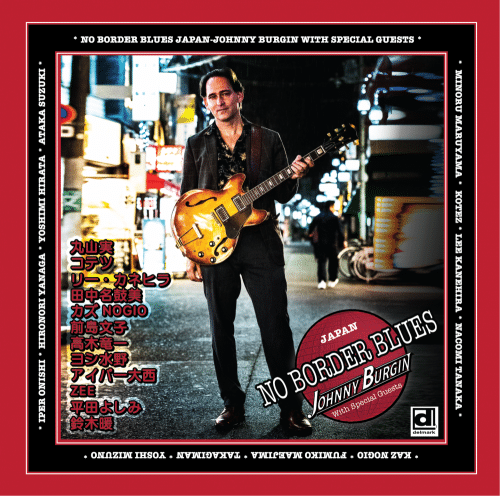
-Story by Tim Parsons; interviews interpreted by Mei Hiyane Wehan
- Johnny Burgin and special guests
- ‘No Border Blues: Japan’
- Label: Delmark (DE-863)
- U.S. Release: Friday, June 19, 2020
- Japan release: April 28, 2020
- Recorded: May 5, 2019 at Fukada Studios, Osaka and on track on Sept. 20, 2019, Riverside Studios, Chicago.
- Vocals: Johnny Burgin, Lee Kanehira, Kotez , Nacomi Tanaka, Kaz Nogio, Iper Onishi. Guitar: Johnny Burgin, Yoshi Mizumo, Nacomi Tanaka, Minoru Maruyama. Piano: Lee Kanehira. Harmonica: Kotez, Kaz Nogio, Iper Onishi. Drums: Takigaman, Ataka Suzuki, Fumiko Maejima, Stephen Dougherty. Bass: Yoshimi Hirata, Hironori “Zee” Yanaga, Chris Matheos.
